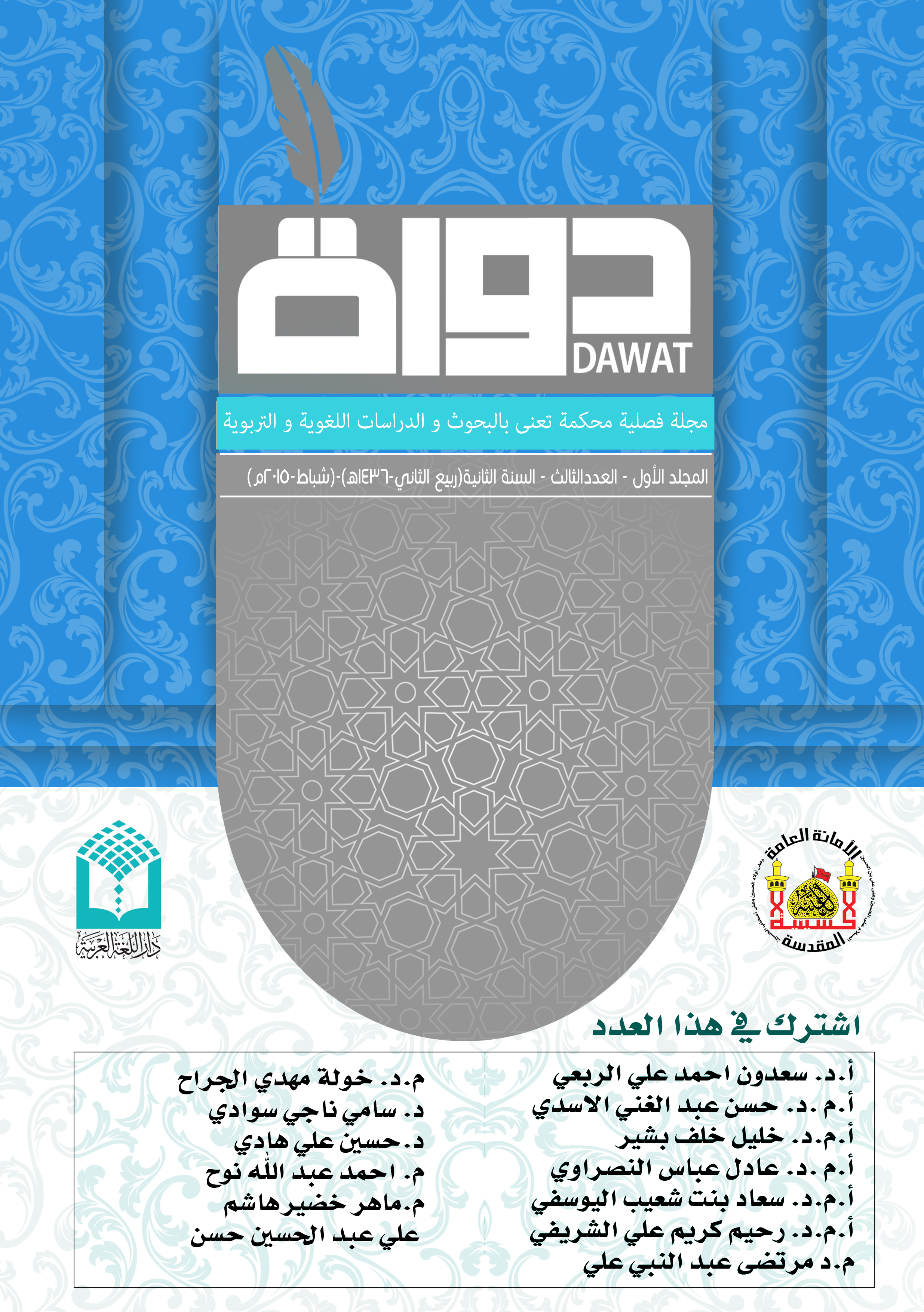Abstract
This research sheds light on the stylistic contextual phenomenon in the language of the Quran, reflected in the associationof response letters like (No, never, yes ) and the oath letters in one context of structure. The association of language means sequence , closeness and convergence between two or more phrases in speech. What is the secret thatassociation0 And how do ancient and modern scholars interpret this stylistic phenomenon0 Was it a common style in the speech of Arabs in the age eloquence and purity of language0 And what are the purposes of using association and relationship? These and other questions are the reasons behind the present study which attempts to answer these questions through examples taken from the Holy Quran, the prophetic sayings, excerpts from Nahj al-Balagha, and Arabic poetry . The research clarifies the two dimensions, syntactic and semantic,of this phenomenon by discussing and anlysing it using a scientific method following the modern theories of linguistics and ancient and modern Arab scholars' views . It is found out that using a response letter with oath letters is a common style of Arabic ,which is still in use inboth the standard Arabic and the dialectsin order to emphasize negation and exaltation of the person to whomthe oathis directed , or reply and answer previous talk , or negating the need for the oath in case of definite and fixed matters.
Abstract
هذا بحث يسلط الضوء على ظاهرة أسلوبية سياقية في لغة القرآن الكريم تتجلى في تعانق أحرف الجواب ( لا، كلا ، بلى ) والقسم في سياق واحد من التركيب . والتعانق في اللغة يعني التتابع والتقارب والتداني بين مقطعين أو أكثر في الكلام . فما سرّ هذا التعانق 0 وبماذا فسَّر علماء العربية – قدماء ومحدثون – هذه الظاهرة الأسلوبية 0 وهل هو أسلوب شائع في كلام العرب في عصر الفصاحة والبلاغة 0 وما الأغراض المتوخاة من هذا التعانق والاقتران ؟ هذه الأسئلة وغيرها كانت الباعث على هذه الدراسة التي حاولت فيها الإجابة عن تلك الأسئلة بالوقوف عند أمثلة لهذه الظاهرة الأسلوبية في القرآن الكريم عزَّزتُها بأمثلة أخَرَ من الحديث الشريف ، ونصوص نهج البلاغة، والشعر العربي الفصيح ؛ لتبيين البعدين النحوي والدلالي لهذه الظاهرة بمناقشتها وتحليلها على وفق منهج علمي في ضوء النظريات اللسانية الحديثة وآراء علماء العربية المتقدمين والمتأخرين . وقد تبيَّن لنا أن إدخال حرف الجواب على القسم بأنواعه ووسائله المتعددة هو أسلوب مستفيض في اللسان العربي ما زال مستعملا في لغتنا العربية بمستوييها الفصيح والعامي يستعمله المتكلمون بالعربية لتوكيد النفي وتعظيم المقسم عليه وتفخيم شأنه ، أو ردًّا وجوابا لكلام قد مضى وتقدّم ، أو نفيًا للحاجة إلى القسم على أمور يقينية ثابتة لا يتطرق إليها الشك أبدًا ، ويرمي إلى التأكيد والتقرير والتأثير .
